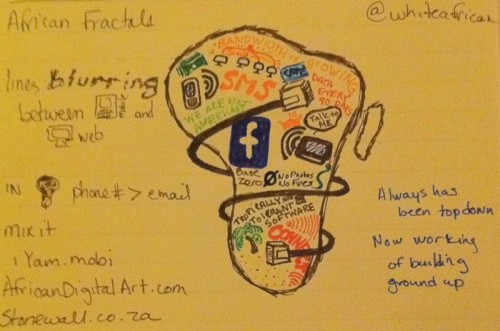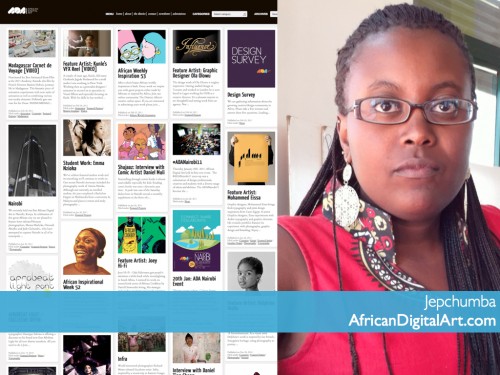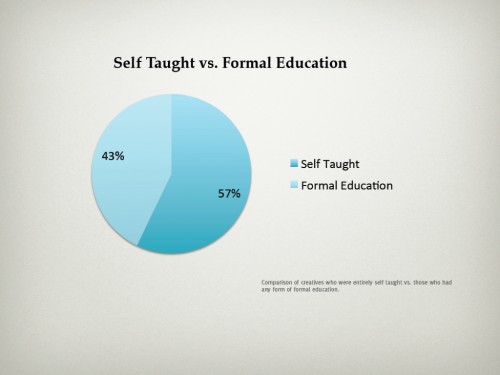I get culture shock every once in a while, and it’s not the normal type where you’re coming to a new country and everything is completely different than your own country. This is more subtle, I’m at a conference with a lot of people who look and sound like me, but when you actually listen to their conversation you realize that they define themselves and the world in a way just slightly different than you do. That’s what happened to me over the last 3 days here in Boulder, Colorado at the IxDA 2011 – the big Interaction Design Association annual conference. I’m surrounded by 600+ designers, people who think deeply about why you and I do things, and ways to make us do it better, differently or for more money.
Africa’s Digital Design Constraints
I was fortunate enough to meet Jon Kolko, one of the organizers, at PopTech a couple years ago, leading to this invite. My role was to talk as a practitioner, and I covered everything from AfriGadget to Maker Faire Africa and Ushahidi. I then delved into the constraints around design and building in the African tech space, by breaking down the three main areas that I see:
- Bandwidth
- Mobiles
- Culture
Specifically, I covered how bandwidth has made it difficult for people to create new sites and services, but more importantly, how the uptake of those is limited by consumer use of the internet due to costs and speeds. This is changing though, as tracked and evidenced by the lowering data costs and increased bandwidth being piped into the continent each year.
I also covered the swiftly blurring lines between Mobile and web. How due to the fact that mobiles are the primary device for Africans and usually the first device that people have a meaningful interaction with the internet on, is creating a different type of user. How the entrepreneurs in Africa’s web space are thinking of it from a mobile context and how they build services to address their audience. Here I got into the argument of diffusion of internet penetration via the big international players like Facebook and Google through mobiles, which then open up infrastructure and cultural use making it more accessible to local startups.
Finally, I talked about culture. How this culture of mobile first plays out. Where the phone number trumps the email address on user signup, and where transactions happen due to that norm. It’s here that I also got to bring up one of my favorite people, Jepchumba, the creator of African Digital Art. She is creating a community, and a movement, to get African designers talking to each other and showcasing their work to the world – breaking down the stereotypes and building up new personalities across the continent.
Jepchumba helped me come up with some of the content behind my talk due to running her African web design survey last week (it’s still open). There’s a lot of information in that survey, much of which is still being gathered. As an example though, is this chart showing the percentage of African web designers who are self-taught as opposed to having a formal education. I wonder if this is normal globally?
Designers as Explorers
Getting back to my starting point. Sometimes this culture shock leads to great conversations, and it allows me to see the world that I live and work in a slightly different way.
Erin Moore is a designer and a storyteller, usually through video and blogging (see her newest project on Kickstarter). She introduced me to this terminology of “designers as explorers” – something that might be very apparent to the IxD field, but foreign to me. It’s a phrase that fits. Where we see designers as a new generation of what we thought of as National Geographic explorers a century ago. They’re best embodied by the Jan Chipchases of the world, who spend a great deal of time watching, listening and understanding how design interactions work, and then translating those discoveries to the rest of the world.
It fits because I have a hard time with a lot of the well-intentioned design community thinking that they can parachute into places like Africa, usually with a solution already in mind, and change the world. There is a place for designers in Africa, but the greatest value lies in recognizing the expertise at the local level, the inventiveness and ingenuity already there, and rubbing shoulders with them in a way that both gain value and maybe even build something new.
Ana Domb is another of the unique people that I met here at IxDA, she’s studied at MIT and has a good steeping in both digital technology, mixed with a focus on media and understanding fans (the people kind). It was this background that took her to Brazil (she’s Chilean) to study Technobregas – a crazy hodgepodge of fans, artists, sponsors and DJs all banding together to create their own music reality, outside of the traditional music industry’s grasp. It takes someone with a distinct design focus and understanding of how social interactions happen to be able to translate that to someone like me (paper here).
We need to see more of this. Where American designers do parachute in, but not as problem solvers, instead as explorers. Where their expertise rubs off on those they meet, and those they meet rub off on them. Both benefit. Equally, we need to see more African designers going abroad and using their expertise in shaping the way the Western world uses technology and understands community. Design interactions go both ways.



